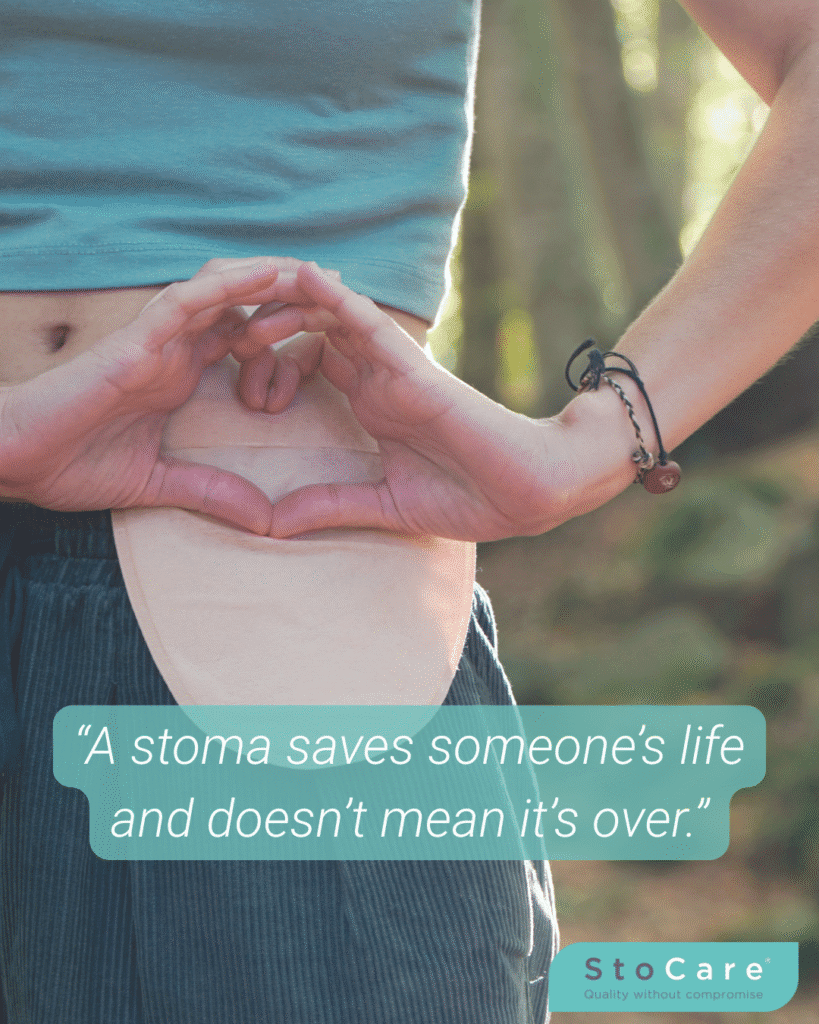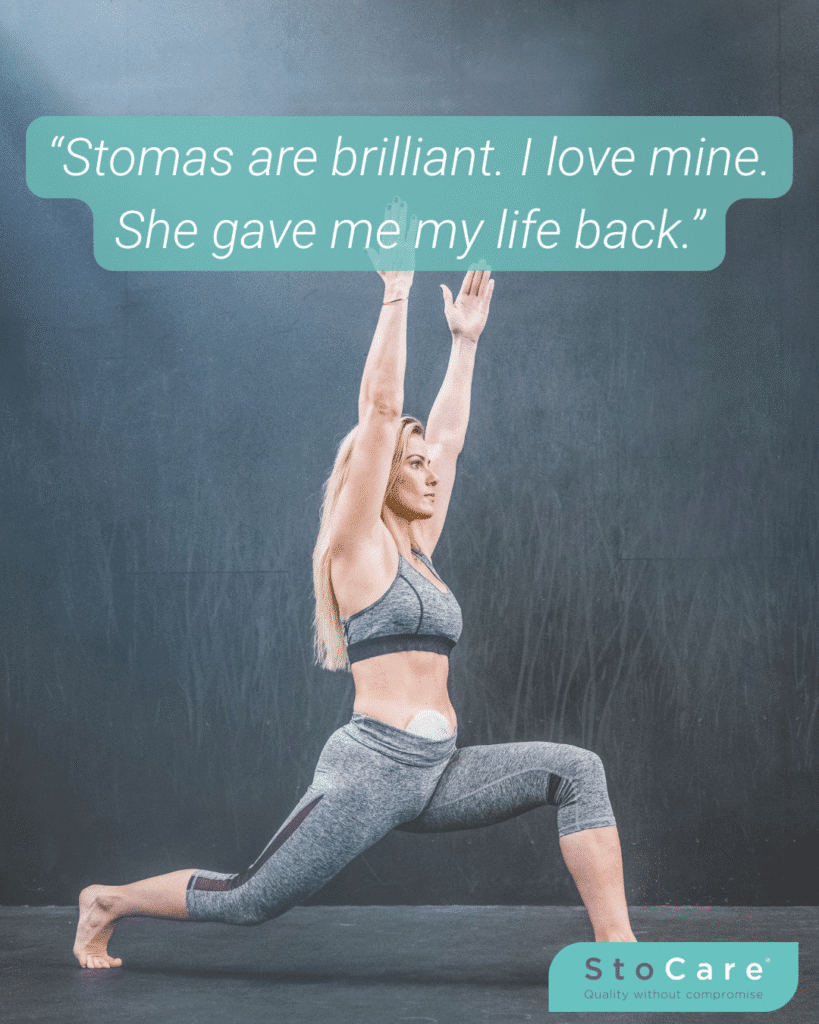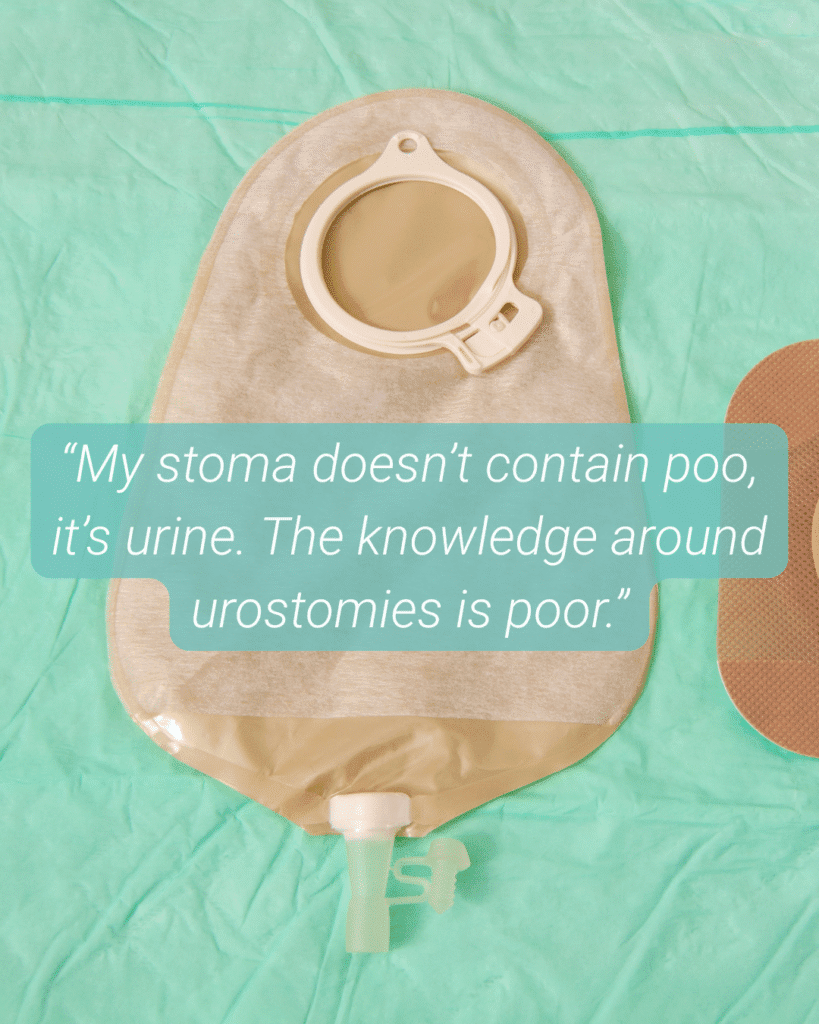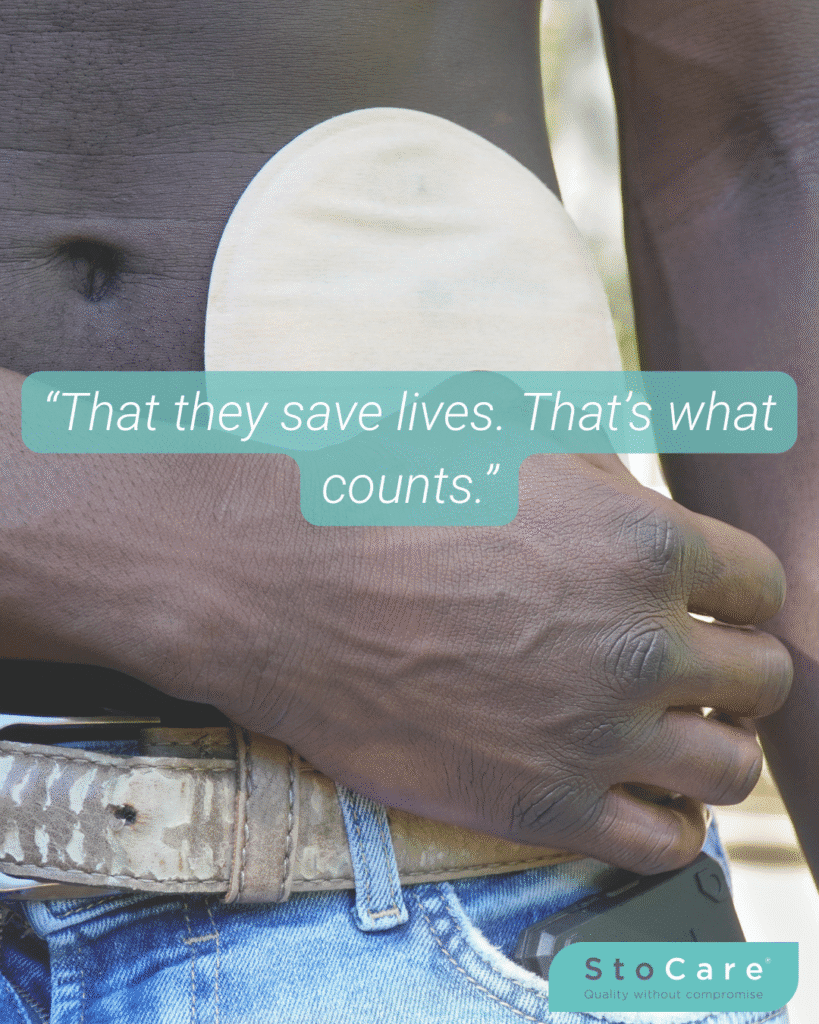Stoma Awareness Day is celebrated on the 4th of October. It is a fantastic opportunity to shine a light on the experiences of ostomates around the world. While stomas save thousands of lives every year, they are unfortunately widely misunderstood in society. This lack of understanding can lead to stoma misconceptions, societal stigma and unnecessary challenges for those living with a stoma.
So, this Stoma Awareness Day, we wanted to give ostomates a platform to share their voices. We asked our ostomate community on social media a simple question: What one thing do you wish the world understood about stomas? The responses we received were insightful and inspiring. Continue reading to find out what people with a stoma want you to understand.
1. Stoma misconceptions
There are a number of stoma misconceptions that are common in society, mainly due to a lack of understanding. One of the most persistent myths surrounding stomas is that they smell. This misconception can cause unnecessary anxiety for new ostomates and contributes to societal stigma. However, as one of our community members clearly stated: “They don’t smell.”

Modern stoma bags are designed with odour-proof materials and secure sealing systems. When properly maintained and emptied regularly, stomas should not produce any noticeable smell. This is an important fact that can help reduce the anxiety many people feel after stoma surgery. Find out more: Stoma odour
Another common misconception is that only elderly people have stomas; this is not the case. Anyone of any age can have a stoma for a variety of reasons. Find out more: Why would you need a stoma?
2. Stomas save lives
At the heart of every stoma story is a life-changing, often life-saving surgery. Multiple members of our community emphasised this fundamental truth:
- “That they save lives. That’s what counts.”
- “A stoma saves someone’s life and doesn’t mean it’s over.”

For many ostomates, their stoma represents a new beginning rather than an ending. It’s the medical intervention that allowed them to escape chronic pain, severe illness, or even death. Understanding this can help people to see them in a different light. Find out more by reading our Stoma stories
3. Stomas enable people to thrive
Beyond saving lives, stomas can dramatically improve quality of life. For people who have spent years battling debilitating conditions, a stoma can be genuinely transformative – not a hindrance. One community member shared: “Stomas are brilliant. I love mine. She gave me my life back.”
Another ostomate echoed this sentiment, explaining: “It’s a lot better than being in pain. I can actually control my life.”

Many ostomates report being able to return to work, enjoy exercising, spend quality time with family and participate in activities that were impossible before their surgery. The stoma, rather than being a limitation, becomes an enabler of a fuller, more comfortable life.
4. Rethink sympathy
This point is closely related to the above. Society often responds to news of someone’s stoma with sympathy or pity. However, this reaction doesn’t always align with how ostomates feel about their own experiences. As one community member pointed out: “They’re not necessarily something you need to be sorry for someone who has one.”

While it’s natural to feel compassion for what someone has been through medically, assuming their stoma is a tragedy can be misguided. Many ostomates feel proud of their stoma and what it represents. They may feel relief, gratitude, or empowerment. The key is to take cues from the individual about how they feel, rather than projecting assumptions onto them. You might find our article on How to support a partner with a stoma helpful.
5. Different types of stomas
An important aspect of stoma awareness is recognising that not all stomas are the same. While colostomies and ileostomies are more commonly discussed, urostomies are often not known about at all . One ostomate highlighted this gap in awareness: “My stoma bag doesn’t contain poo, it’s urine. The knowledge around urostomies is poor.”

A urostomy is formed to divert urine away from a diseased or damaged bladder. While they function differently from bowel stomas, they face many of the same stigmas and misconceptions. Raising awareness about all types of stomas helps ensure that every ostomate feels seen and understood.
One little-known fact is that some people have two stomas – a urostomy and an ileostomy, for example. This could be due to extensive cancer treatment which has resulted in the need for both urine and faeces to be redirected. As one member of our community pointed out: “Life can be truly lived well with a stoma or even two!” Read about Laura’s story with two stomas
Why awareness matters
Breaking stoma stigma isn’t just about correcting misconceptions – it’s about improving the lives of ostomates everywhere. When society better understands stomas, ostomates can:
- Feel more confident in social situations
- Access better support and understanding from employers, friends and family
- Connect more easily with others who share similar experiences
- Face less discrimination and judgment
- Navigate healthcare with more informed professionals
Every conversation about stomas, every story shared and every misconception challenged contributes to a more understanding and inclusive society. Once a shameful surgery, stoma surgery is becoming less stigmatised, supported in part by celebrities with stomas telling their stories on public, mainstream platforms.
Join the conversation
Stoma Awareness Day may be one day on the calendar, but the work of breaking stigma and raising awareness continues year-round. If you’re an ostomate, consider sharing your own story – whether with friends and family, on social media, or in support groups. Your voice matters and can help others feel less alone. You can contact us if you’d like to tell your story on our platforms.

If you don’t have a stoma but want to support the ostomate community, the best thing you can do is listen, learn and challenge misconceptions when you encounter them. Share accurate information, support stoma awareness initiatives and treat ostomates with the same respect and dignity you’d offer anyone else.
We’d like to extend our thanks to everyone in our community who participated in this campaign. Your openness and honesty are helping to create a more understanding world for all ostomates.
Stoma resources
There are many organisations and communities to help ostomates and their loved ones connect to others like them and find the support they need. Explore these resources:
Ileostomy and Internal Pouch Association
Further Reading
5 inspirational women with stomas (and their advice)



